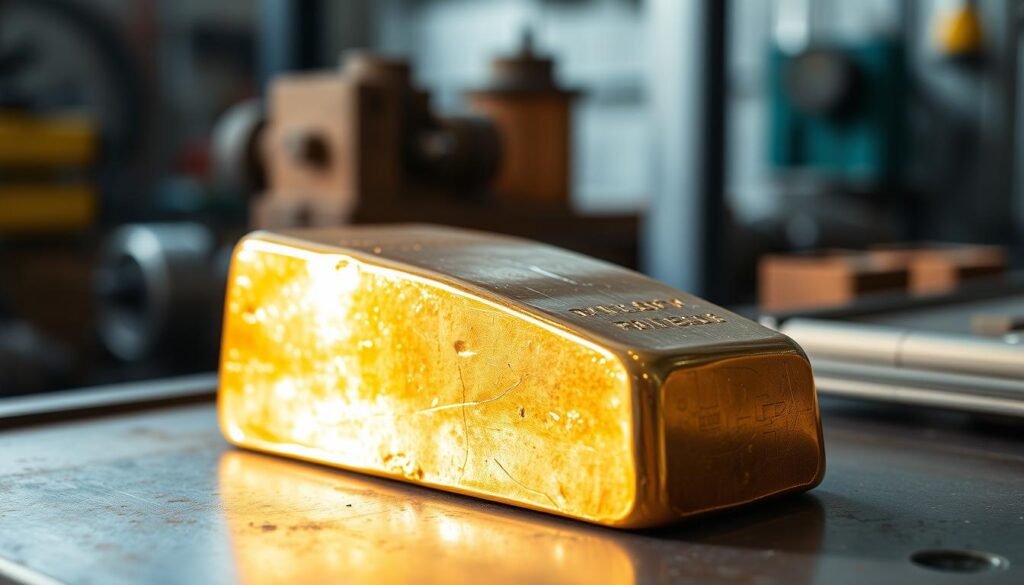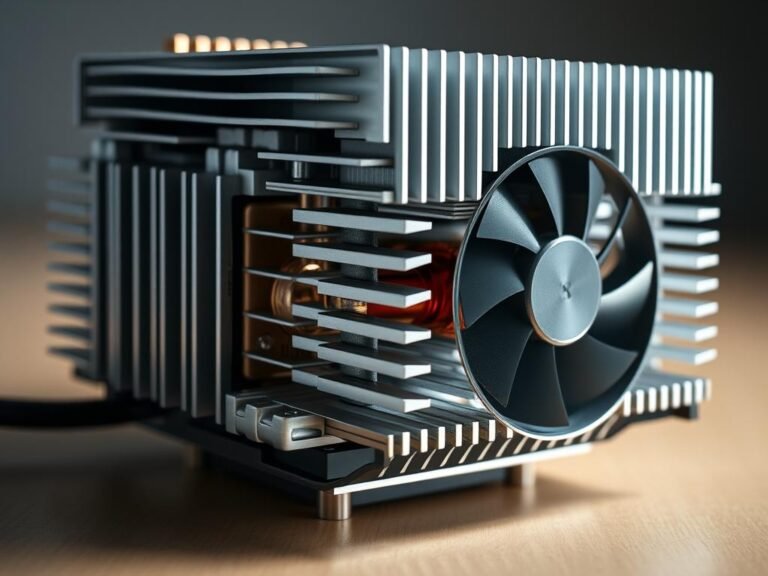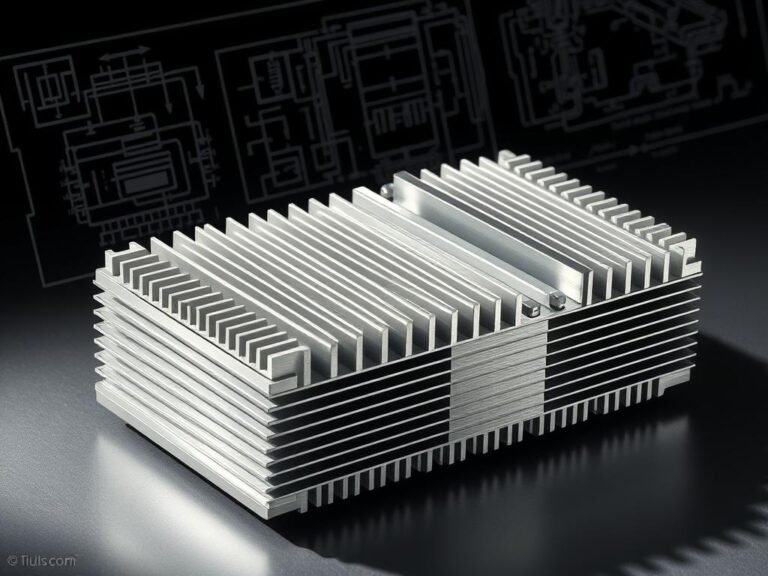The Brass alloy is a versatile material in the United States. metalworkingIts melting point is an important factor for processing and application.
The melting point of brass ranges between 900 and 940 °C. This melting temperature makes brass flexible for many industries.
Brass has advantages such as corrosion resistance and formability. Its specific melting point makes manufacturing and processing easier.
900–940 °C: Properties of brass
Brass melts at temperatures between 900 and 940 °C. The exact melting temperature depends on the composition. Different proportions of copper and zinc, as well as other alloying elements, play a role.
The Kupfer-Zink-Legierung Brass is very versatile. It can be customized by changing the composition. The zinc content not only affects the melting point but also strength and ductility.
Composition influence
The composition of brass is very important. A higher zinc content lowers the melting point. Other elements like lead, tin, or aluminum improve specific properties.
The correct selection of alloying elements and their proportions allows for optimizing brass for specific applications.
The following table shows how alloying elements influence the properties of brass:
| Alloying element | Effect on melting point | Additional properties |
|---|---|---|
| Zinc | Lowers the melting point | Improves ductility |
| Lead | Minor impact | Improves machinability |
| Brass | Can increase the melting point | Improves corrosion resistance |
As the table shows, the composition of brass is very important. By targeted selection and adjustment of alloying elements, manufacturers can optimize brass for their needs.
Brass alloys are very diverse. You can find the right material for almost any application. Whether for decoration, industry, or architecture – brass offers many possibilities.
Manufacturing advantages
Brass is great for manufacturing parts with complex shapes. Its casting properties are excellent, thanks to its melting point.
The melting point of brass ranges between 900–940 °C. This is ideal for casting complex shapes. That’s why brass is very popular in many industries.
Corrosion resistance
Brass is also highly corrosion-resistant. This is due to its composition and manufacturing process. This makes it perfect for humid environments or water contact.
| Property | Description | Advantage |
|---|---|---|
| Corrosion resistance | High resistance to corrosion | Durability in humid environments |
| Casting properties | Optimal casting temperature | Complex shapes possible |
| Aesthetics | Gold-like appearance | Attractive appearance |
Aesthetics
Brass looks gold-like, which makes it very attractive. After casting, it can be made even more beautiful. So, it is not only useful but also visually appealing.
The durability of brass products is a major advantage. With the right process and melting point, the lifespan can be increased.
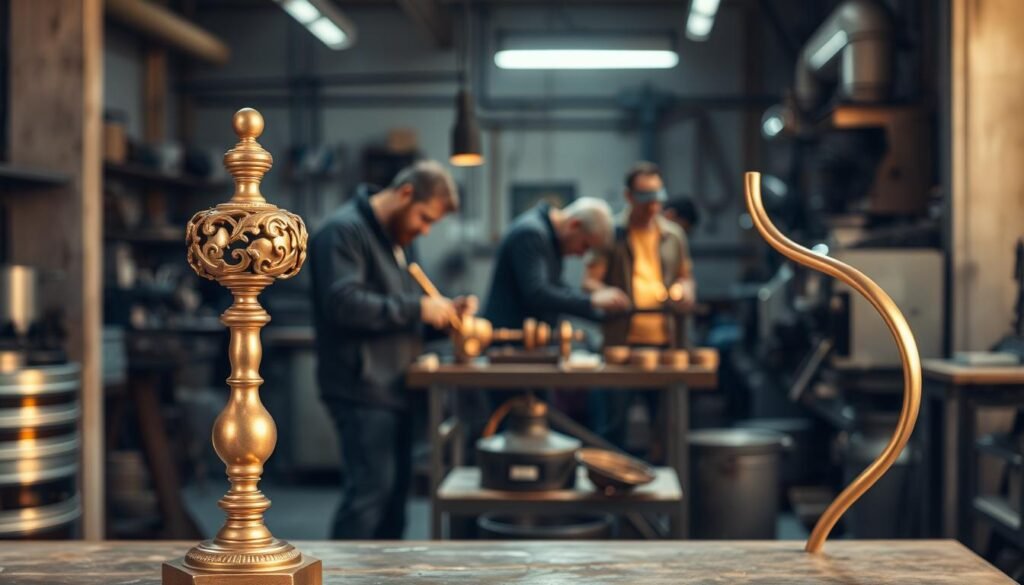
The benefits of brass processing
Brass processing offers many advantages that make it a popular material in the industry. Through the brass processing we can brass objects design precisely and professionally. This is especially important for industrial applications, where accuracy and durability are crucial.
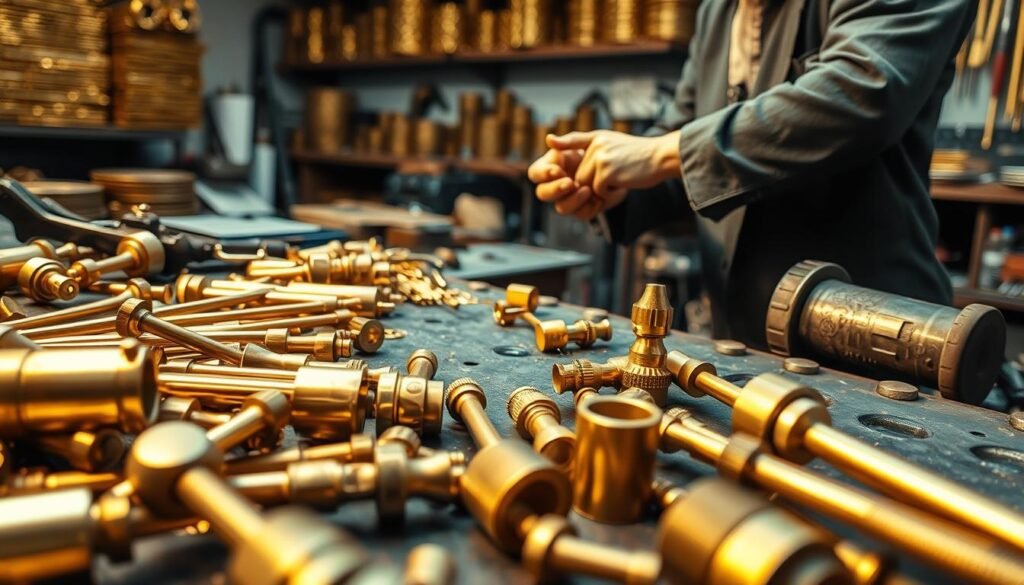
A major advantage of brass is its high Resilience. This makes it ideal for applications where high loads occur. Through the brass processing We can fully leverage these advantages and brass objects produce that are durable and reliable.
Another important aspect is the industrial application Made of brass. Through precise processing, we can design brass objects to be perfectly integrated into industrial systems. This not only improves efficiency but also enhances the safety and reliability of the equipment.
The brass processing allows us to brass objects to produce in various shapes and sizes. This gives us great flexibility in design and customization to specific requirements. Whether for industrial applications or other purposes, brass processing allows us to achieve precise and high-quality results.
Applications
Brass is found in many areas due to its special properties. Its melting point offers many advantages. This makes brass a versatile material.
Applications in plumbing fixtures
In plumbing technology, brass is very popular. It is used for faucets, valves, and more. Brass is corrosion-resistant, malleable, and hygienic.
These properties make it perfect for plumbing fixtures.
Decorative applications
Brass is also used for decorative purposes. It is used for fittings, decorative elements, jewelry, and musical instruments. The good machinability and beauty of brass make it ideal for crafts.
New applications like 3D printing with brass are becoming increasingly popular. The melting point of brass is very important in this context.
